
Emma Marcy Raymond was an American musician, composer, and author of operetta, songs and piano music. She was one of very few women in her day who had composed the entire music of an opera and lived to see it produced.

Florence Sutro, sometimes known as Mrs. Theodore Sutro, was a lawyer and organizer, most known for creating the National Federation of Women's Music Clubs and being its first president.
Helena Theresa Goessmann (1868–1926) was an American lecturer, academic, and writer. During the course of 12 years, she gave over 1,000 lectures and talks on historical, educational, literary, and ethical subjects, in the US, including a period of four months in the winter of 1906, when she delivered in the leading Catholic girls' academies, between New York City, Saint Paul, Minnesota, Omaha, Nebraska, and New Orleans, Louisiana, a course, aggregating 125 lectures, on the "Ethics of Scholarship and Education Today". Goessmann served as the head of the department of History, Notre Dame College, Baltimore and professor of English at State College of Massachusetts. She was actively identified with various social, literary, and religious organizations, in Amherst, Massachusetts, Baltimore, Maryland, and New York.
The Woman's Press Club of New York City (WPCNYC) was an American professional association for women journalists and authors. Located at 126 East 23rd Street, in Manhattan, the organization was founded by Jane Cunningham Croly in Manhattan in November 1889, incorporated in 1919, and dissolved on 8 March 1980.
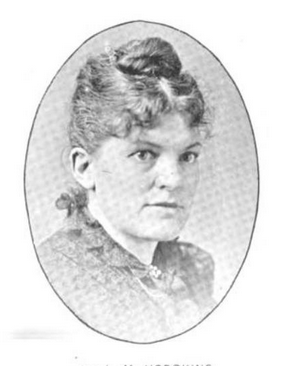
Louise Manning Hodgkins was an American educator, author, and editor from Massachusetts. After completing her studies at Pennington Seminary and Wilbraham Wesleyan Academy, she became a teacher and preceptress at Lawrence College, before receiving a Master of Arts degree from that institution in 1876. She taught at Wellesley College for over a decade before turning her attentions to writing and editing. Her main works included Nineteenth Century Authors of Great Britain and the United States, Study of the English Language, and Via Christi. She served as editor of The Heathen Woman's Friend, the first organ of the Woman's Foreign Missionary Society of the Methodist Episcopal Church, and also edited Milton lyrics : L'allegro, Il penseroso, Comus, and Lycidas and Matthew Arnold's Sohrab and Rustum. She died in 1935.
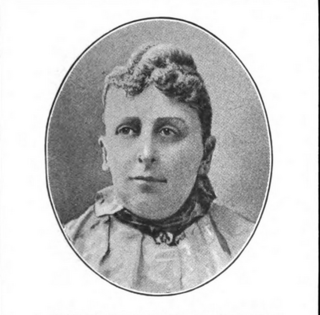
Harriet Abbott Coolidge was an American philanthropist, author and reformer. She did much in the way of instructing young mothers in the care and clothing of infants, and furthered the cause to improve the condition of infants in foundling hospitals. She contributed a variety of articles on kindergarten matters to the daily press, and while living in Washington, D.C., she gave a series of "nursery talks" for mothers at her home, where she fitted up a model nursery. Coolidge was the editor of Trained Motherhood; and author of In the Story Land, Kindergarten Stories, Talks to Mothers, The Model Nursery, and What a Young Girl Ought to Know. She was one of the original signers of the Society of the Daughters of the American Revolution, and was an active member of four of the leading charity organizations in Washington. She died in 1902.

Augusta Cooper Bristol was an American poet and lecturer. She began teaching at the age of fifteen. In 1869, she published a volume of poems, and, the same year, gave her first public lecture. Beginning in 1872, she was frequently called before the public as a speaker.

Anna Christy Fall was an American lawyer. She was the "first woman lawyer in Massachusetts to plead a case before a jury and the first to argue before the Massachusetts Supreme Court".
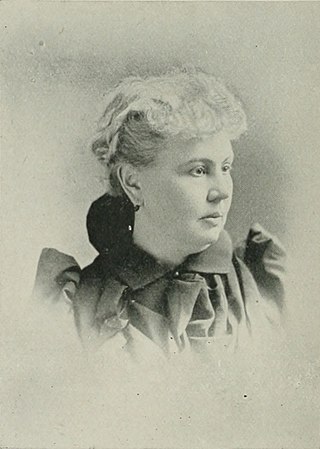
A. Viola Neblett was an American temperance activist, suffragist, and women's rights pioneer. She was an indefatigable worker for temperance in Greenville, South Carolina, and was the first woman in her state to declare herself unreservedly for woman suffrage over her own signature in the public prints. She was a notable participant in the annual convention of this Association at Atlanta in 1895, and later spent months in Washington, D.C. in the endeavor to secure the enfranchisement of women under the new constitution of South Carolina. In her last days, she planned a bequest to the National American Woman Suffrage Association. In her own town, she founded and endowed the Neblett Free Library, her home becoming Greenville's first library.

Anna Campbell Palmer was an American author and editor. Disliking publicity, she wrote constantly under a great number of nom de plumes, adopting a new one when she began to be identified. Sometimes she had intervals of complete silence, distrustful of her powers and displeased with her efforts. After her marriage, she was known as "Mrs. George Archibald". In 1901, she began to use her full married name, Mrs. George Archibald Palmer, on all her books and articles in periodicals. She wrote a number of poems which appeared in the principal magazines of her day. She was also a successful author of fiction and biography. Palmer served as editor of Young Men's Journal, a YMCA magazine, from 1889 until 1898, at the time being the only woman editor of a young men's journal in the world.

Octavia Williams Bates was an American suffragist, clubwoman, and author of the long nineteenth century. She was involved with women's movements associated with higher education and political enfranchisement. Bates was probably officially connected with more societies looking to these ends than any other woman of her time in Michigan, if not in the U.S. She traveled in various parts of the U.S. and Canada, and was specially interested in the woman suffrage movement. In 1899, after attending a conference in Baltimore, Maryland, Bates was so attracted to the city that she made it her permanent home.

Florence E. Kollock was an American Universalist minister and lecturer. She organized and served as pastor of the Stewart Avenue Universalist Church, Chicago, 1878–92. She subsequently served as pastor of the Universalist Church, Pasadena, California, 1892–95, where, with a membership of nearly 500, it was the largest congregation in the world under the charge of a woman. From 1904 till September 1910, she was the pastor of St. Paul's Universalist Church, Jamaica Plain (Boston), Massachusetts. Kollock served as President of the Woman's Centenary Association,, 1902–3. She lectured extensively in the U.S. and abroad on sociological and philanthropic problems. She was prominent in all reformatory and educational work, including the temperance movement and women's suffrage.
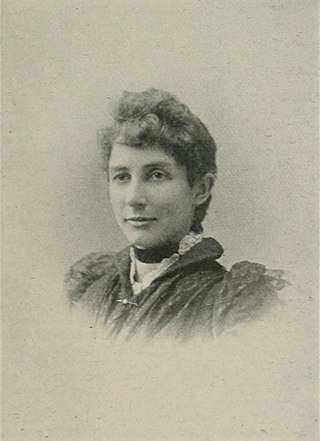
Emma Winner Rogers was an American writer and speaker upon economic and social questions, and on the Arts and Crafts movement. She favored suffrage, and served as an officer of the National American Woman Suffrage Association. Among her published works can be counted Deaconesses in the early church. Deaconesses in the modern church. (1891), The social failure of the city (1898), The Journal of a Country Woman (1912), and Why not complete the enfranchisement of women (1912).
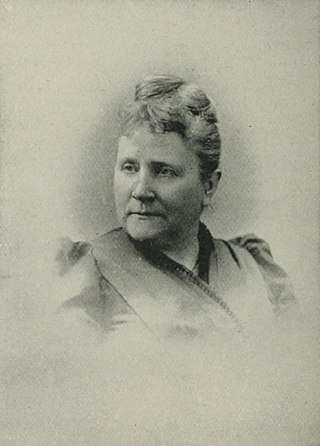
Margaret B. Peeke was an American traveler, lecturer, and author of the long nineteenth century. In her early life, Peeke taught at a public school and her private school. Later, she taught Hermetic philosophy in New York City, Chicago, Boston, Washington, D.C., and elsewhere (1893–98); visited Hermetic societies abroad (1898–99); and had an assembly of followers in Sandusky, Ohio. She served as Inspectress-General in the U.S. of the Martinist Order of France, and as treasurer of Light of France, Hermetic Society of France. She was a member of the Baháʼí Faith and of the Rose Cross Martinist Fraternity.

Josephine Cushman Bateham was an American social reformer, editor, and writer in the temperance movement. The Sabbath Observance Department of the National Woman's Christian Temperance Union (WCTU) was organized at the St. Louis (National) Convention in 1884, and Bateham, then of Painesville, Ohio, was appointed its first Superintendent, continuing in charge of the Department until compelled by failing health to resign in 1896. In addition, Bateham was a supporter of social reform for women.
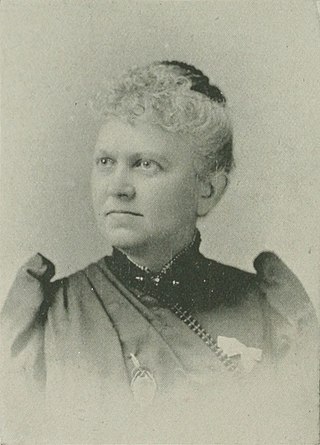
Marietta Stanley Case was a 19th-century American poet and temperance advocate. Her very best poems were entitled, "The Waning Century" and "Amorpatioe", the latter being written for the Daughters of the American Revolution (D.A.R.), as well as "Amor Patriæ", written for her alma mater. She was one of the Connecticut women authors given creditable mention at the Cotton States and International Exposition.

Corinne Stocker Horton was an American elocutionist, journalist, newspaper editor, and clubwoman. For years, she was the society editor of The Atlanta Journal, but withdrew from the staff after her first marriage. She continued to write for magazines, but was also a successful fiction writer. Horton was affiliated with the Players' Club of Atlanta, the Atlanta Woman's Club, and the Georgia Women's Press Club.

Sibylla Bailey Crane was an American educator, musical composer, and author. Her benevolent work included that of the church, the educational institutions of Massachusetts, the general theological library, and the prisons and reformatory schools of the state. She was prominent in musical and social circles and in various patriotic and other organizations, and contributed liberally for the advancement of many worthy objects. Crane was the author of a volume entitled, Glimpses of the Old World.
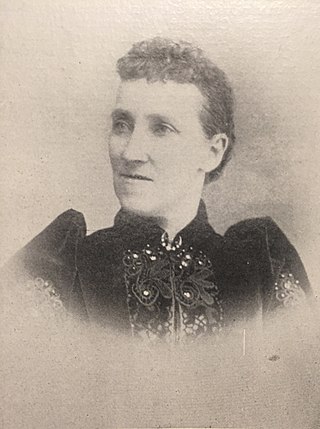
Levancia Holcomb Plumb (1841–1923) was an American business woman, financier, and temperance reformer. She was the president and chief stockholder of the Union National Bank of Streator, Illinois. At the time, with one exception, she was the only woman head of a bank in the U.S.

Mary A. Brinkman (1846–1932) was an American homeopathic physician who specialized in gynaecology. By her training, education, acquired knowledge and natural endowments, she seemed predestined to exert a wide influence upon our era for the physical welfare of women through her lectures, medical writings, and contributions to literature. She was the first woman elected to the vice-presidency of the New York State Homoopathic Medical Society.


















